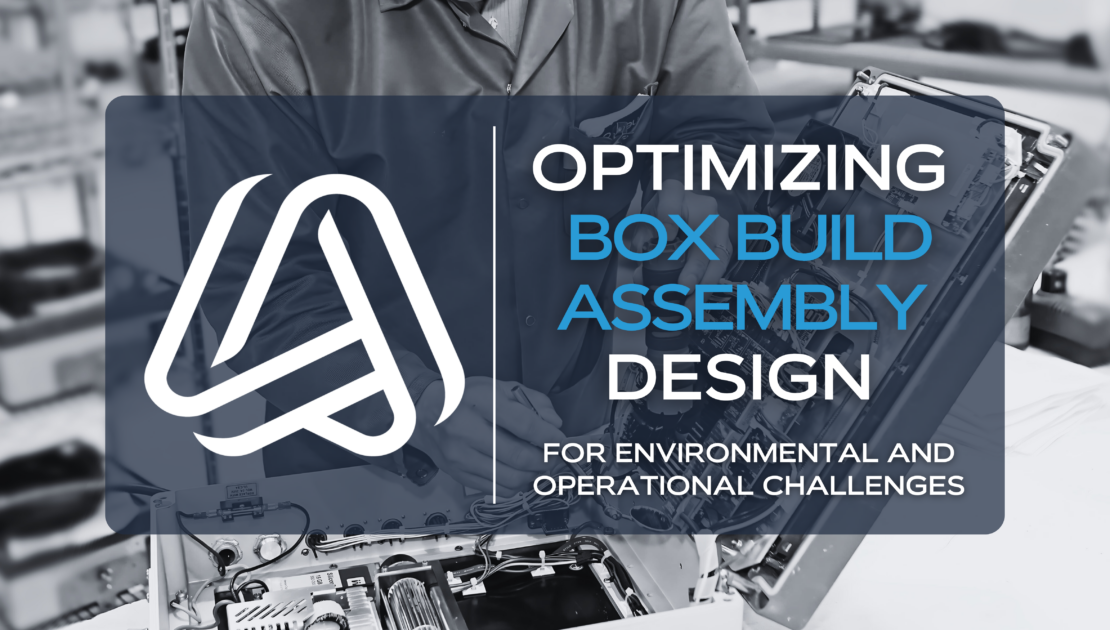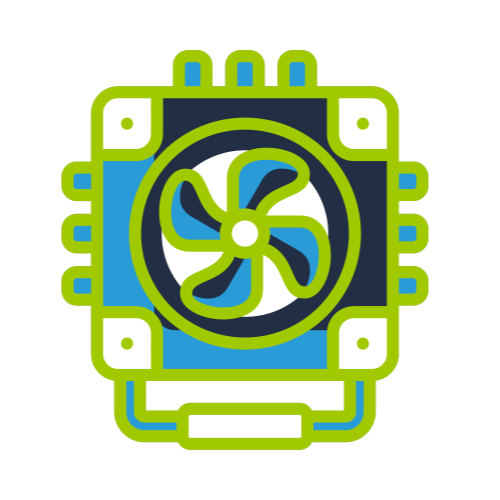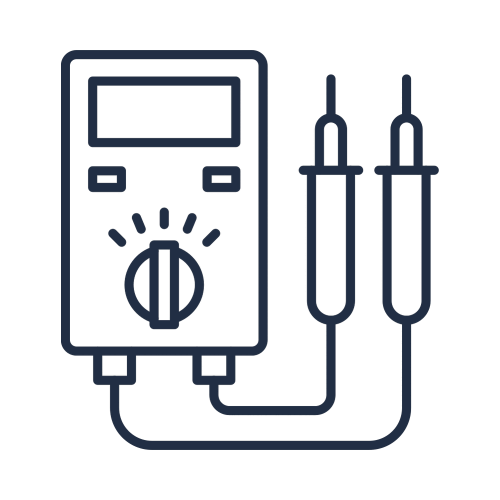Optimizing Box Build Assembly Design for Environmental and Operational Challenges

Introduction
Box build assembly design involves meticulous planning and strategic decision-making to ensure the design meets environmental and operational demands. This article delves into key considerations such as material selection, thermal management, protection from elements, shock and vibration tolerance, compliance standards, ease of maintenance, scalability, energy efficiency, testing protocols, and user-centric design.
Material Selection
Choosing the right materials for a box build assembly is critical. The materials must endure harsh environmental conditions, including temperature extremes, humidity, and corrosion. High-quality materials ensure durability and reliability in specific environments.
Stainless steel, carbon steel, aluminum, polycarbonate, and ABS are common choices, each offering unique benefits. For instance, stainless steel is excellent for extreme corrosion resistance but may not be ideal for products requiring extensive custom tooling. Polycarbonate and ABS are often preferred for their lightweight and impact-resistant properties.
Key Considerations for Box Build Materials:
- Does the design include an antenna for transmitting RF signals?
- Can the device withstand snow, rain, or sleet?
- Is the device exposed to saltwater or chemicals?
- What appearance qualities are desired?
- Does the device need protection from electromagnetic or radio frequency interference?
- Will the device endure significant impacts?
- Are precision cutouts necessary on the enclosure?
- What IP or NEMA rating is required?
Thermal Management

Effective thermal management is paramount in maintaining optimal operating temperatures and preventing overheating, especially in compact assemblies. Thermal management technologies, such as heat sinks and fans, are widely used across industries, including aerospace, automotive, and data centers.
There are two main types of thermal management:
- Active Thermal Management: Involves devices like pumps, thermoelectric coolers, and fans that require an external power source.
- Passive Thermal Management: Uses solutions like convection and natural cooling, which do not require additional power.
Choosing the appropriate thermal management strategy depends on the specific needs of the assembly and the operational environment.
Protection from Elements
To ensure long-term performance, assemblies must be protected from environmental contaminants such as dust, moisture, and chemicals. Several protection mechanisms may be employed:
Encapsulation:
Pouring protective material to form a robust barrier, providing electrical insulation and shock resistance.
Conformal Coating:
Applying a thin protective layer on the PCB surface to shield against dust, chemicals, and moisture. Despite its protective benefits, conformal coating can be cost-prohibitive due to masking and cleaning requirements.
Environment Sealing:
Using gaskets, o-rings, or watertight housings to prevent external objects and moisture from entering the assembly.
Shock and Vibration Tolerance
Shock and vibration tolerance is a critical consideration in the design of box build assemblies, especially for devices that will be transported frequently or used in environments where they will be exposed to physical stress. Ensuring that an assembly can withstand these conditions involves a combination of material selection, design strategies, and testing procedures.
Material Selection for Durability:
Materials like stainless steel and polycarbonate are ideal for high impact resistance. Stainless steel is particularly effective in heavy-duty applications due to its toughness and resilience. Polycarbonate offers a lightweight alternative with excellent shock absorption properties.

Materials like stainless steel and polycarbonate are ideal for high impact resistance. Stainless steel is particularly effective in heavy-duty applications due to its toughness and resilience. Polycarbonate offers a lightweight alternative with excellent shock absorption properties.
Design Strategies:
Designing an enclosure that can absorb and dissipate energy is essential. This might include:
- Reinforced Corners and Edges: Strengthening these areas can prevent damage during drops or impacts.
- Shock Absorbers and Dampeners: Integrating these components can help mitigate the effects of sudden shocks.
- Internal Mounting Systems: Using shock-absorbing mounts to secure internal components can prevent damage from vibrations.
Testing for Reliability:
Assemblies should undergo rigorous testing to simulate real-world conditions. Tests might include:
- Drop Testing: Simulating the effects of drops from various heights to ensure the assembly can withstand impacts.
- Vibration Testing: Using vibration tables to replicate the conditions during transport or operation in high-vibration environments.
Compliance and Standards for Box Build Assembly Design

Adhering to industry standards and compliance requirements is essential to ensure the reliability, safety, and performance of box build assemblies. These standards guide the design, testing, and manufacturing processes, ensuring that assemblies meet stringent criteria.
Adhering to industry standards and compliance requirements is essential to ensure the reliability, safety, and performance of box build assemblies. These standards guide the design, testing, and manufacturing processes, ensuring that assemblies meet stringent criteria.
Ingress Protection (IP) Ratings:
IP ratings classify the degree of protection provided against dust and water ingress. For example, an IP67 rating indicates that the assembly is completely dust-tight and can withstand immersion in water up to 1 meter for 30 minutes. Selecting the appropriate IP rating ensures that the assembly can operate effectively in its intended environment.
National Electrical Manufacturers Association (NEMA) Ratings:
NEMA ratings provide similar information to IP ratings but are more commonly used in North America. They cover additional factors such as corrosion resistance and the ability to withstand environmental hazards like ice formation.
Military Standards (MIL-STD):
For assemblies used in defense applications, adherence to military standards is crucial. These standards, such as MIL-STD-810, specify environmental testing conditions like temperature extremes, humidity, and shock. Compliance ensures that the assembly can perform reliably in harsh conditions.
Environmental and Safety Certifications:
Certifications like RoHS (Restriction of Hazardous Substances) and REACH (Registration, Evaluation, Authorization, and Restriction of Chemicals) ensure that materials used in the assembly are environmentally safe and comply with regulations regarding hazardous substances.
Ease of Maintenance and Serviceability
Designing for ease of maintenance and serviceability can significantly impact the lifecycle and operational efficiency of the assembly. Modular structures allow for quick component replacement without affecting the entire system, reducing downtime and repair costs.
Key considerations include:
- Component Accessibility: Ensure critical components are easily accessible.
- Tool Availability: Use readily available tools for maintenance and repairs.
- Standardized Parts: Utilize standardized components to ensure continued availability and lower costs.
Scalability and Flexibility in Box Build Assembly Design
Designing box build assemblies with scalability and flexibility in mind ensures that they can adapt to evolving requirements and technological advancements. Scalability and flexibility allow for future upgrades and modifications without necessitating a complete redesign, thereby extending the assembly’s lifespan and usefulness.

Modular Design:
A modular approach allows individual components or modules to be upgraded or replaced independently. This can include:
- Interchangeable Modules: Designing modules that can be easily swapped out for newer versions or different configurations.
- Standardized Interfaces: Using common interfaces and connectors to facilitate compatibility with various modules and components.
Expandable Systems:
Designing assemblies that can accommodate additional components or functionality is crucial. This might involve:
- Additional Slots and Ports: Including extra slots or ports for future expansion, such as adding more memory, storage, or peripheral devices.
- Upgradable Firmware and Software: Ensuring that the firmware and software can be updated to support new features and improvements.
Future-Proofing Your Box Build Assembly Design:
Considering future technological trends and requirements during the design phase helps in creating future-proof assemblies. This includes:
- Anticipating Technology Advancements: Staying informed about emerging technologies and industry trends to incorporate potential future needs.
- Flexible Power Supplies: Using power supplies that can support a range of voltages and power requirements to accommodate future upgrades.
Energy Efficiency
Energy efficiency is a key consideration in the design of box build assemblies, impacting both operational costs and environmental sustainability. Efficient designs not only reduce energy consumption but also enhance the performance and reliability of the assembly.
Power Management:

Effective power management strategies are essential for minimizing energy consumption. These might include:
- Low-Power Components: Selecting components that require less power without compromising performance.
- Power-Saving Modes: Implementing power-saving modes that reduce energy consumption during periods of inactivity.
Thermal Efficiency:
Efficient thermal management also contributes to energy efficiency. By maintaining optimal operating temperatures, the assembly can operate more efficiently and prolong the lifespan of components. This might involve:
- Heat Dissipation Technologies: Using heat sinks, fans, and other technologies to dissipate heat effectively.
- Passive Cooling: Designing assemblies to use natural convection and other passive cooling methods to reduce the need for active cooling.
Renewable Energy Integration:
Incorporating renewable energy sources, such as solar or wind power, can further enhance energy efficiency and sustainability. This might involve:
- Solar Panels: Integrating solar panels to provide supplemental power or charge batteries.
- Energy Harvesting: Using technologies that capture and utilize ambient energy, such as kinetic or thermal energy.
Testing Protocols
Rigorous testing protocols are vital to ensure that assemblies can withstand specified environmental and operational conditions. Common testing methods include:
- X-ray Inspection
- In-circuit Testing
- Flying Probe Testing
- Dielectric Testing
- Functional Testing
- Environmental Testing
- Compression Testing
- Thermal Shock Testing

These tests identify potential issues and ensure the reliability and performance of the assembly.
User-Centric Design
Designing box build assemblies with a user-centric approach ensures that the end product is easy to operate, maintain, and service. This focus on usability enhances user satisfaction and overall efficiency.
Ergonomic Box Build Assembly Design:
Consideration of ergonomic principles in design ensures that the assembly is comfortable and convenient for users to handle and operate. This might include:
- User-Friendly Interfaces: Designing interfaces that are intuitive and easy to navigate.
- Accessible Controls: Placing controls and indicators in easily accessible locations to facilitate operation.
Maintenance and Serviceability:
Designing for ease of maintenance and serviceability reduces downtime and ensures that the assembly remains operational. Key considerations include:
- Modular Components: Incorporate modular components that can be easily replaced or upgraded.
- Tool Availability: Ensure maintenance can be performed with readily available tools.
Documentation and Training:
Providing comprehensive documentation and training materials ensures that users can effectively operate and maintain the assembly. This might include:
- User Manuals: Creating detailed user manuals that cover all aspects of operation and maintenance.
- Training Programs: Offering training programs to educate users on best practices and troubleshooting techniques.
Conclusion
Box build assembly design requires a comprehensive understanding of environmental and operational considerations. By focusing on material selection, thermal management, protection from elements, shock and vibration tolerance, compliance standards, ease of maintenance, scalability, energy efficiency, testing protocols, and user-centric design, manufacturers can create reliable and durable assemblies that meet diverse needs.
Partner with August Electronics for end-to-end box build assembly services, ensuring your products are manufactured to the highest standards. Our expertise and commitment to excellence make us the ideal choice for all your box build and mechanical assembly needs.
